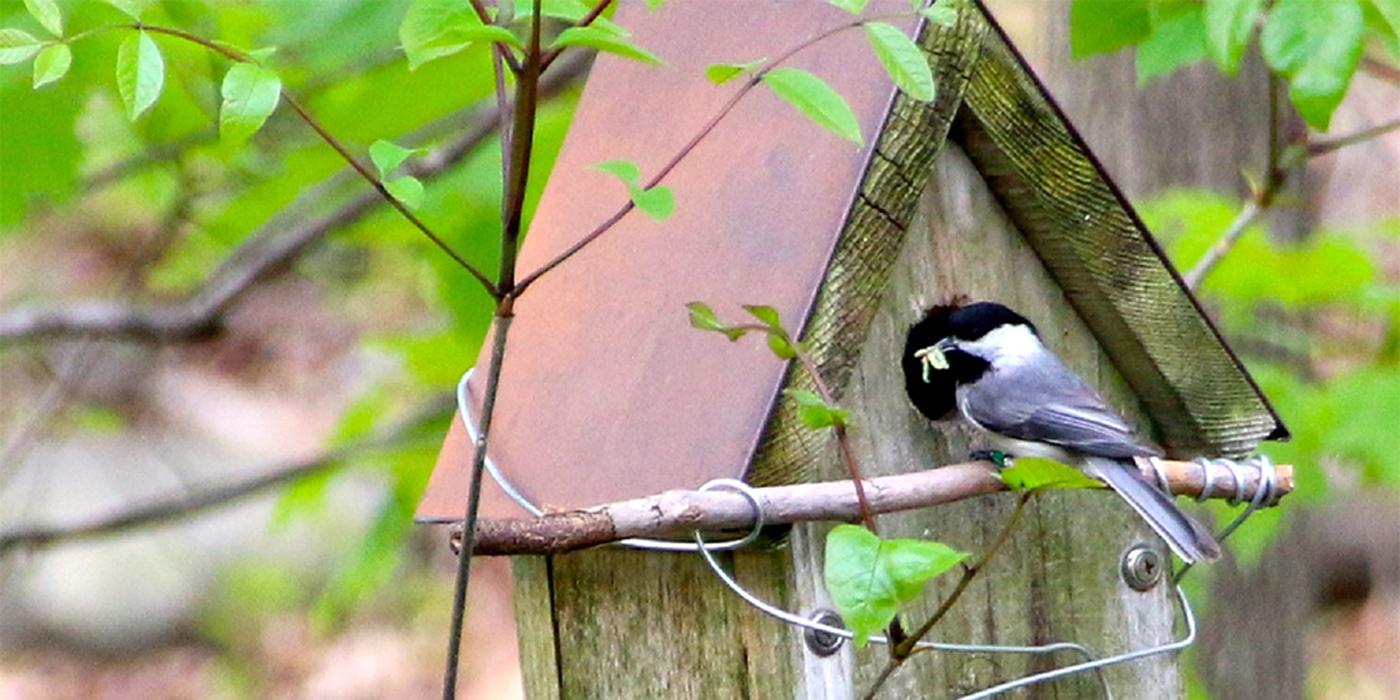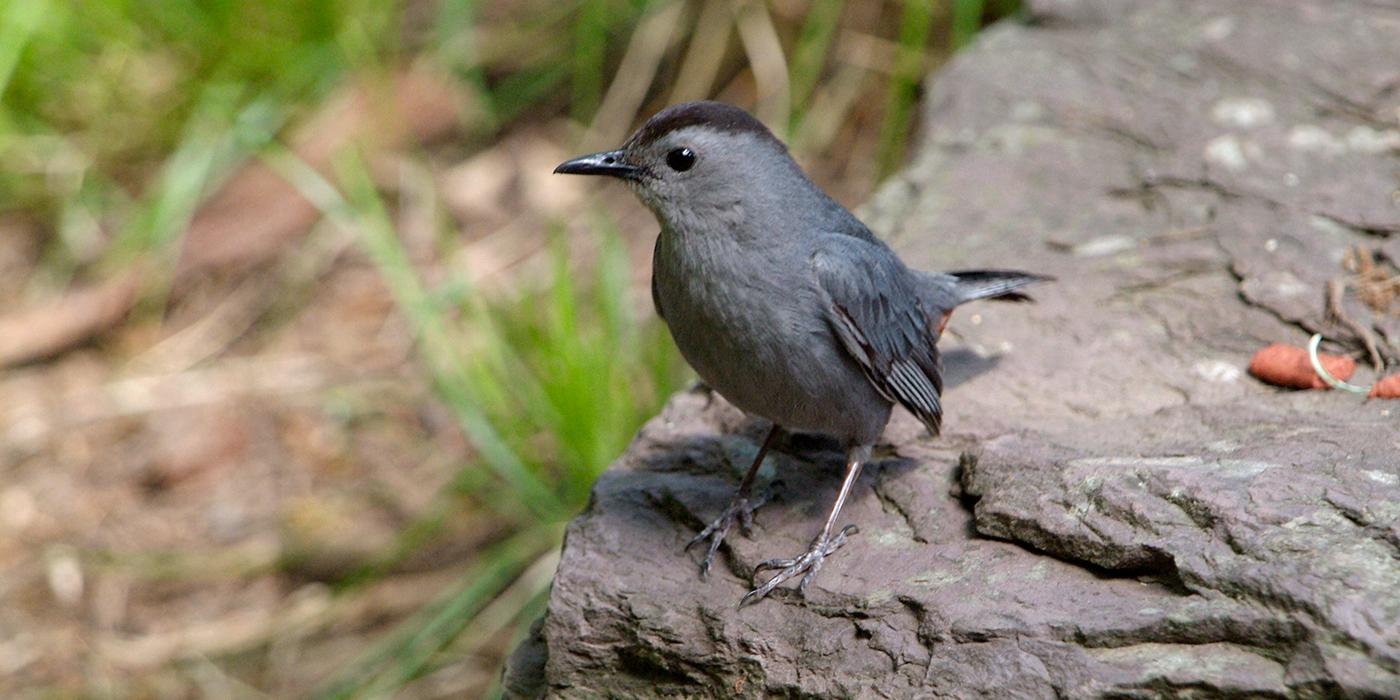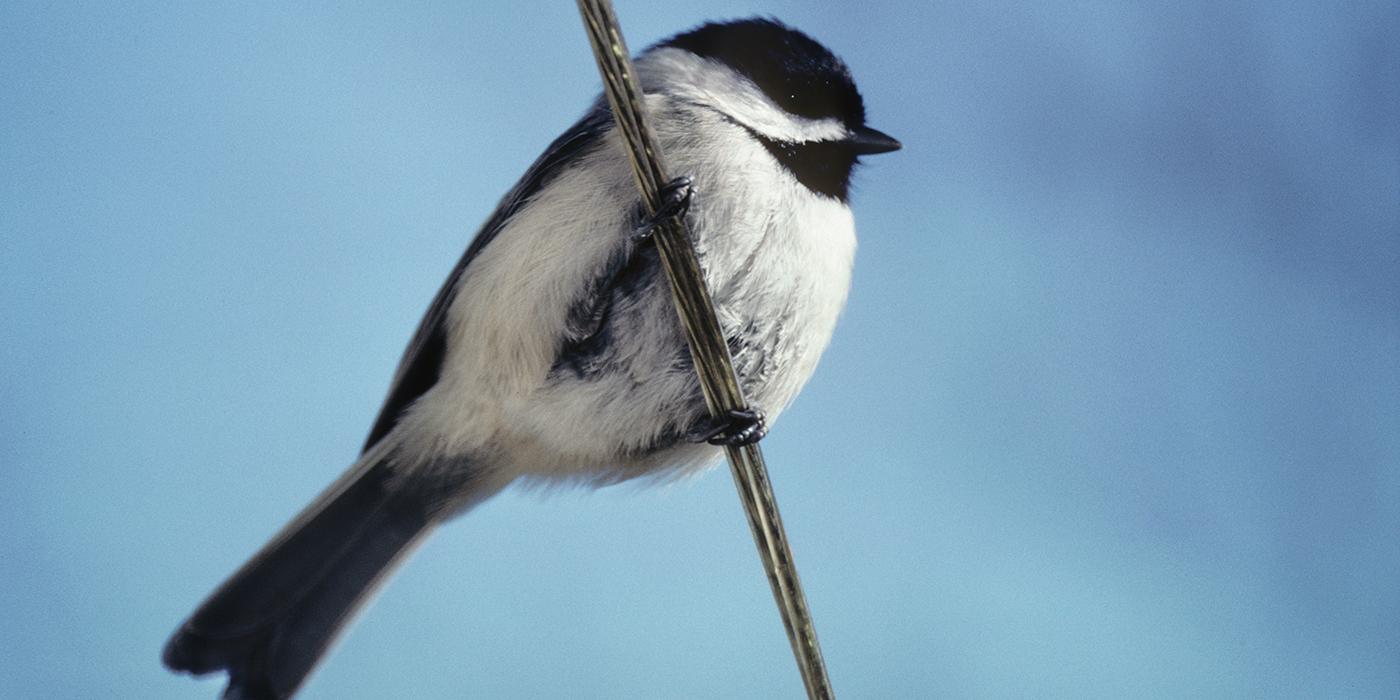Rock Creek Park Expedition Blog

Rock Creek Park Breeding Bird Census
Since 1948, birds have been counted in spring and summer in a study plot in Rock Creek Park, a large forested area in Washington, D.C.
The deciduous upland forest habitat has harbored 51 different kinds of birds (full list at bottom of page).
The purpose of the census is to monitor long-term changes of the bird population.
Woodpeckers
5 species of woodpeckers are found in the study plot: downy, hairy, flicker, pileated, and red-bellied.
Woodpecker numbers appear to be fairly stable but note that as the forest has gotten more mature (about 80 years old when the survey started), the larger woodpeckers (pileated, red-bellied, hairy) have gotten more common. Pileated woodpeckers, the largest species, were not found during the 40s and 50s.
Most of these cavity nesters likely spend the year in the study plot, except perhaps the flicker.
Flycatchers
The eastern wood-pewee, acadian flycatcher, eastern phoebe, and great crested flycatcher all breed in the plot.
These neotropical migrants have declined pretty significantly, especially the acadian and great crested flycatchers.
Phoebes are fairly common in Rock Creek Park but have very specific nesting requirements, often on a bridge or building (but not in a tree). There is only 1 bridge in the plot.
Vireos
The most common nesters in the plot at the beginning of the survey, the migratory red-eyed and yellow-throated vireos have declined precipitously.
Yellow-throated vireos appear to have recolonized the plot after disappearing in the 1970s.
Corvids
Blue jays and American crows occasionally nest in the plot.
Never very common, they may have been affected in the 21st century by the spread of West Nile Virus. Corvids are particularly susceptible to the disease.
Parids
The resident Carolina chickadee, tufted titmouse, and white-breasted nuthatch all nest in cavities in trees.
Like other non-migratory birds in the park, their numbers appear to be fairly stable.
Thrushes
The migratory wood thrush, veery, and American robin all occur in the study plot, at one time or another.
While wood thrushes have significantly declined, veeries have colonized the plot and then died out. Beginning in the 90s, robins colonized the plot and are the most common bird in 2010.
Warblers
Northern parula, American redstart, Kentucky warbler, hooded warbler, and black-and-white warbler were all found in the plot.
These colorful migratory songbirds have all died out in the plot and maybe from Rock Creek Park as well.
Ground Warblers
Ovenbirds and Louisiana waterthrushes nest on or near the ground.
The migratory ovenbird has declined alarmingly while the Louisiana waterthrush has been fairly stable. Waterthrushes nest along streams and there is one small stream in the plot.
Miscellaneous
Like other Neotropical migratory songbirds, the scarlet tanager has declined in numbers. Towhees and cardinals, which favor shrubby edges, occur in low numbers in the forested plot. Cowbirds, which parasitize songbird nests, are not particularly common in the plot.
Complete Bird List
- Cooper's Hawk
- Red-shouldered Hawk
- Broad-winged Hawk
- Red-tailed Hawk
- Mourning Dove
- Yellow-billed Cuckoo
- Barred Owl
- Chimney Swift
- Ruby-throated Hummingbird
- Red-bellied Woodpecker
- Downy Woodpecker
- Hairy Woodpecker
- Northern Flicker
- Pileated Woodpecker
- Eastern Wood-Pewee
- Acadian Flycatcher
- Eastern Phoebe
- Great Crested Flycatcher
- Yellow-throated Vireo
- Red-eyed Vireo
- Blue Jay
- American Crow
- Carolina Chickadee
- Tufted Titmouse
- White-breasted Nuthatch
- Brown Creeper
- Carolina Wren
- Blue-gray Gnatcatcher
- Eastern Bluebird
- Veery
- Wood Thrush
- American Robin
- Gray Catbird
- European Starling
- Northern Parula
- Black-and-white Warbler
- American Redstart
- Worm-eating Warbler
- Ovenbird
- Louisiana Waterthrush
- Kentucky Warbler
- Hooded Warbler
- Scarlet Tanager
- Eastern Towhee
- Song Sparrow
- Northern Cardinal
- Indigo Bunting
- Common Grackle
- Brown-headed Cowbird
- Baltimore Oriole
- House Sparrow
Rock Creek Park Winter Bird Census
Since 1948, birds have been counted in winter in a 65 acre study plot in Rock Creek Park, a large forested area in Washington, D.C. The deciduous upland forest habitat has harbored 41 different kinds of birds.
However, only 5 kinds of birds have been found in every year: Carolina chickadee, tufted titmouse, white-breasted nuthatch, downy woodpecker, and brown creeper. These birds often occur together in small flocks.
The most common birds are the chickadee and the titmouse. In the chart below, you can see that their numbers fluctuate quite a bit from year to year. Year is the x-axis and count is on the y-axis. The nuthatch, woodpecker, and creeper numbers have been fairly stable.
It can be difficult to spot bird population changes over the short-term so long-term surveys like this one, and the Breeding Bird Census, help us to monitor the state of birds.
This census was restarted in the winter of 2010 after having last been surveyed in 1979.
Habitat
As can be seen in the picture below, the study plot is a deciduous forest on a slope heading toward Rock Creek. The upper section is dominated by oak trees while the lower section favors tuliptrees.
Several ravines cut through the forest but only one has permanent water. The understory is comprised of saplings and a few shrubs.

Wintering birds subsist on a diet of nuts and seeds provided by the trees as well as overwintering insects and their eggs. There is little fruit in the plot available.
Succession
The forest area was likely cut during the Civil War (1860s) and continues to regrow. When the study plot was first set up in 1948 there were scattered Virginia pines but these have died out as hardwoods have taken over.
Young beech trees, with their smooth white trunks, are quite visible in the photo and when they mature, will likely be the final stage of the forest's succession.
Threats
Deer have become more common in the park since 2000 and their browsing on low vegetation has opened up the forest understory.
Exotic shrubs from Asia, such as barberry and doublefile viburnum (Viburnum plicatum), have taken root in some areas of the plot and threaten to spread widely and displace native plants. Their spread may be speeded up by birds dispersing their winter fruit.
Bird Abundance Table
| Bird | Average | Years |
|---|---|---|
|
Average is the average number of birds (per 100 acres) divided by the total number of years. A '*' indicates less common species. Years is the number of years the bird was observed. |
||
| Carolina Chickadee | 17 | 24 |
| Tufted Titmouse | 11 | 24 |
| White-breasted Nuthatch | 5 | 24 |
| Downy Woodpecker | 4 | 24 |
| American Crow | 4 | 22 |
| Red-bellied Woodpecker | 4 | 23 |
| Dark-eyed Junco | 3 | 19 |
| Blue Jay | 2 | 15 |
| Turkey Vulture | 2 | 20 |
| Carolina Wren | 1 | 22 |
| Brown Creeper | 1 | 24 |
| European Starling | 1 | 16 |
| Northern Cardinal | 1 | 19 |
| Golden-crowned Kinglet | 1 | 17 |
| Hairy Woodpecker | 1 | 21 |
| Mourning Dove | 1 | 9 |
| White-throated Sparrow | 1 | 6 |
| Eastern Bluebird | * | 11 |
| Pileated Woodpecker | * | 11 |
| Purple Finch | * | 9 |
| Red-tailed Hawk | * | 13 |
| American Goldfinch | * | 8 |
| Winter Wren | * | 10 |
| American Robin | * | 4 |
| Northern Mockingbird | * | 8 |
| Yellow-bellied Sapsucker | * | 8 |
| Black Vulture | * | 4 |
| Fish Crow | * | 4 |
| Red-shouldered Hawk | * | 4 |
| Barred Owl | * | 3 |
| Red-breasted Nuthatch | * | 3 |
| Pine Siskin | * | 1 |
| Sharp-shinned Hawk | * | 2 |
| Black-capped Chickadee | * | 1 |
| Eastern Towhee | * | 1 |
| Evening Grosbeak | * | 1 |
| Great Horned Owl | * | 1 |
| Hermit Thrush | * | 1 |
| House Finch | * | 1 |
| Ruby-crowned Kinglet | * | 1 |
| Yellow-rumped Warbler | * | 1 |


